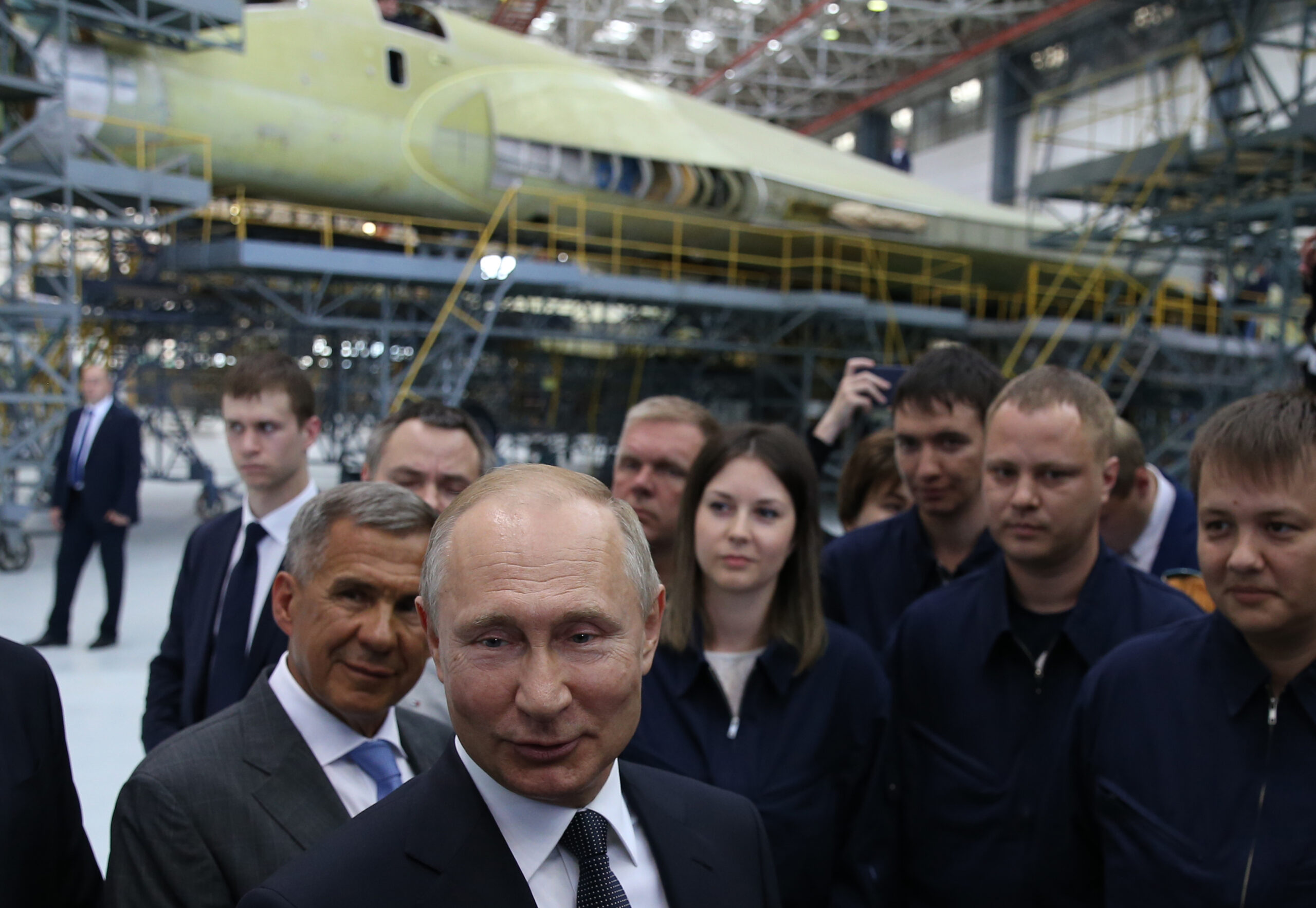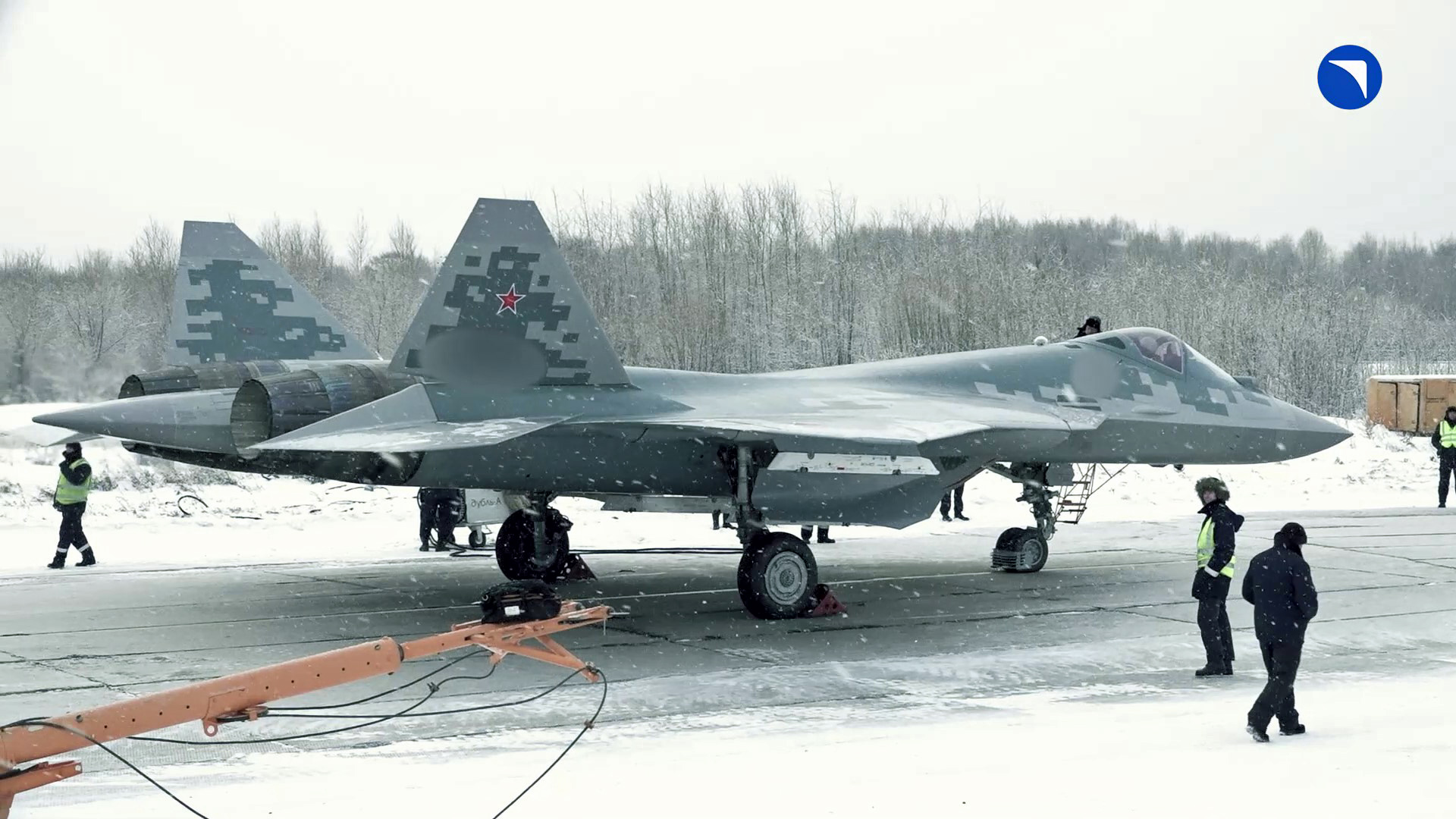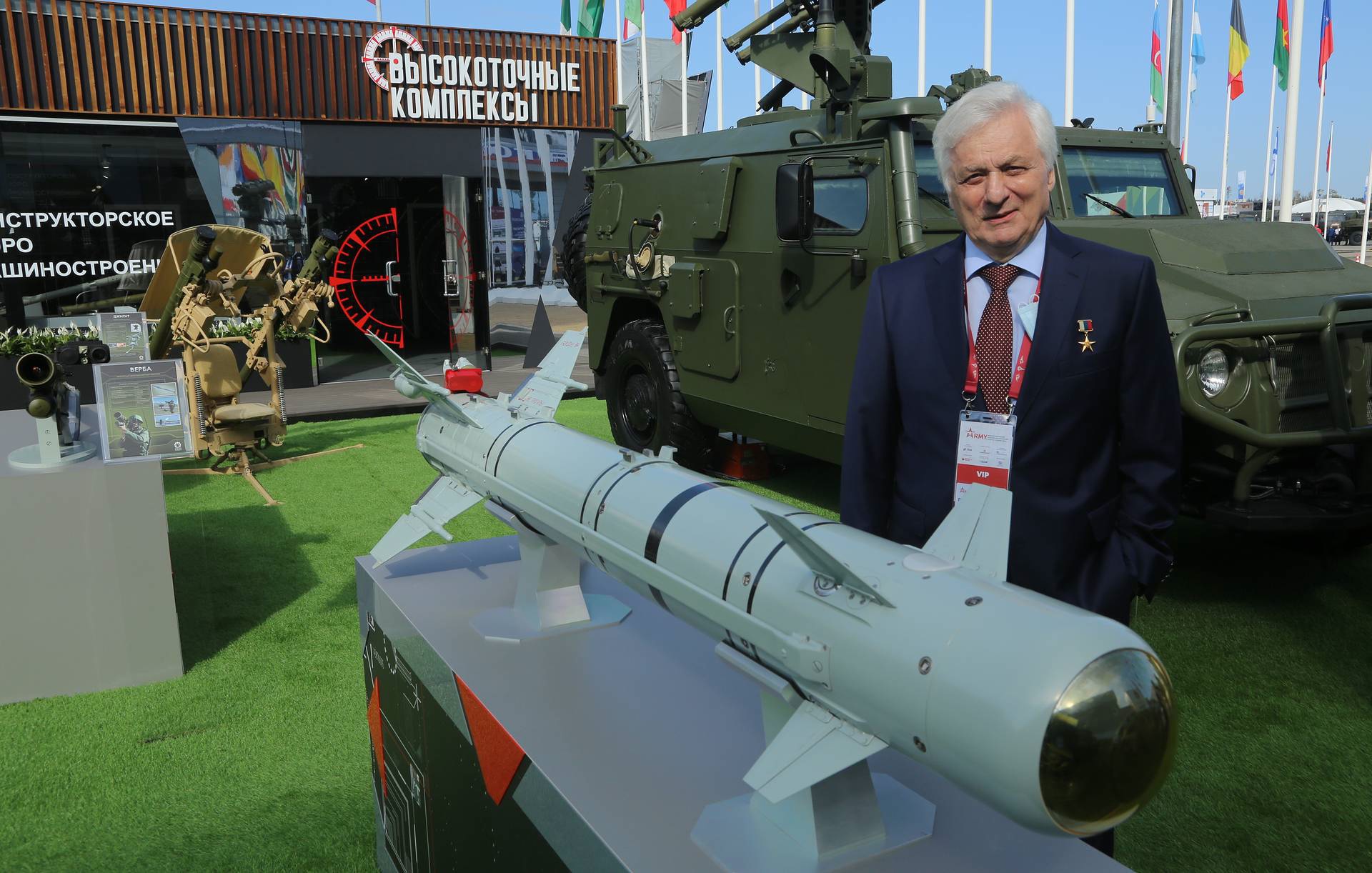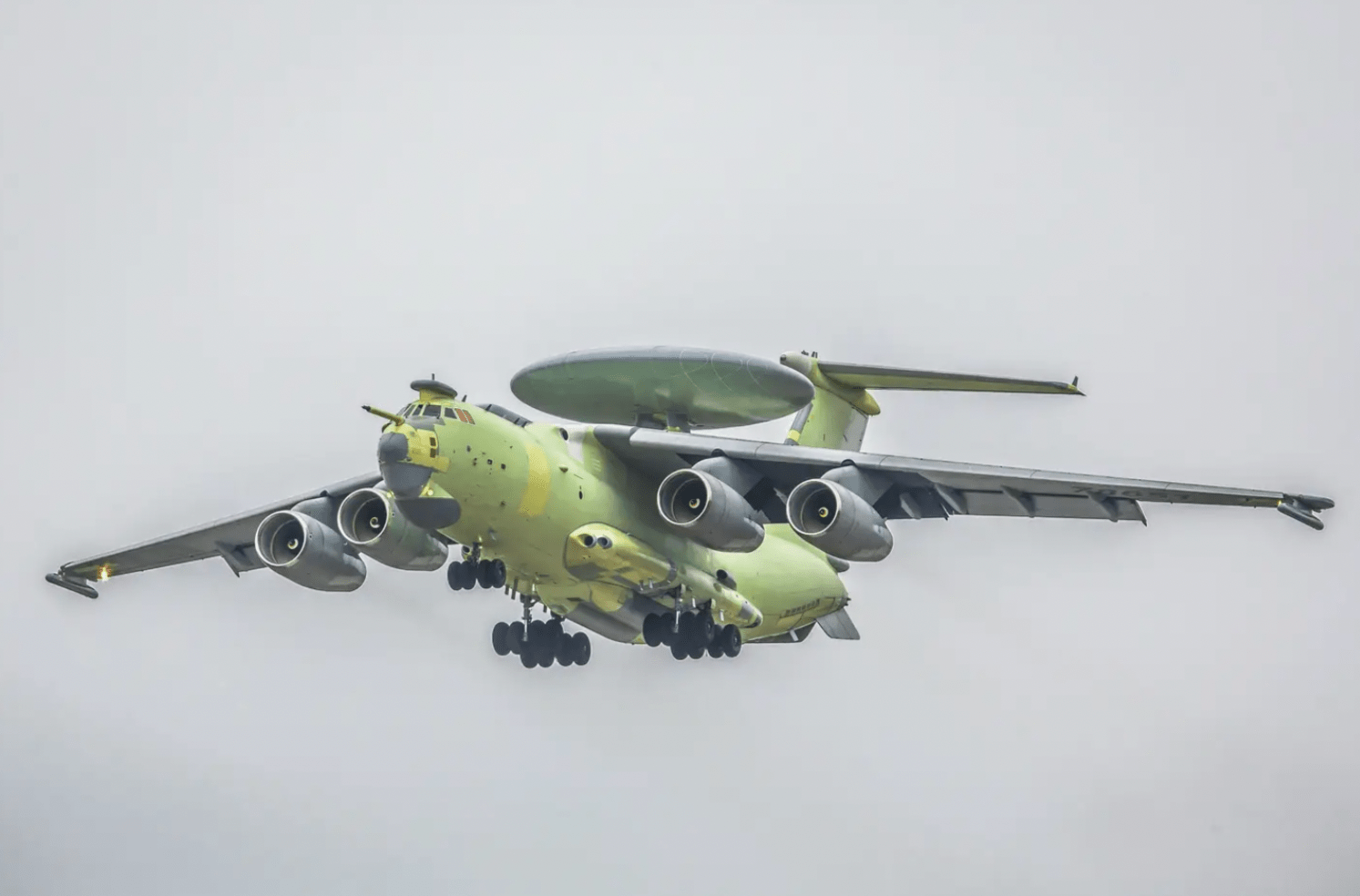The full-scale Russian invasion of Ukraine in February 2022 led to a sharp increase in military spending in many countries, including Russia. While the Kremlin is generally keen to promote its big-ticket defense programs, above all to help generate lucrative export sales, it’s far less simple to get a handle on how much Russia itself is currently spending on these various weapons.
However, searching through official Russian documents does still provide some fascinating insight into the costs involved, at least for some key defense programs. This is of particular interest for those military aircraft that have been exposed to combat over Ukraine and, in the process, taken significant losses, like the Ka-52 attack helicopter, as well as some of the critical air-launched weapons that are being expended in the same conflict.

With that in mind, let’s take a look at the prices of Russian aviation military equipment, based on available official documents. Note that, in the article, costs are provided in the original Russian ruble currency, although conversions to the U.S. Dollar appear in a separate table and we will give an explanation as to why this is not the best comparative metric in our conclusion.
How much does the Su-57 cost?
Known to NATO as Felon, the Su-57 is Russia’s latest fighter jet, and its series production is only just getting started. So far, there are no operational units equipped and all nine aircraft handed over to the Russian Ministry of Defense (the latest four in December 2022) are at the Akhtubinsk test facility and Lipetsk crew conversion center.
Beginning in June 2022, Russian officials reported on several occasions about the employment of the Su-57 in Ukraine, including the use of weapons launched from its internal bays. The head of the United Aircraft Corporation, Yuri Slyusar, said last August that “the aircraft is taking part in the special military operation, showing its best side.” It’s almost certain that Su-57s have not flown over Ukrainian-controlled territory — Russia would simply not risk it. If they have been used in combat, they will have fired their missiles from well within Russian territory.

The most reliable information about the price of the Su-57 comes from a presentation shown to Russian Minister of Defense Sergei Shoigu during his visit to the Su-57’s production plant in Komsomolsk-on-Amur in August 2020. According to a poster shown to Shoigu, the price of two aircraft from the initial batch (completed in 2019 and 2020) amounted to 4,700 million rubles each (including 20 percent VAT). Furthermore, the poster included the forecast price reduction during the course of production for the batch of 76 fighters ordered in June 2019 (for delivery until 2028); the price of one aircraft produced in 2028 is expected to amount to 3,192 million rubles. It’s important to remember that this is the unit price of a current production aircraft and does not include the costs of research and development, or preparations for production, which were previously paid in separate contracts.

How much does the Il-76MD-90A cost?
The Il-76 Candid is Russia’s basic large military transport aircraft and the only one of its kind used in significant numbers. In the Soviet era, it was produced in Tashkent, in the Uzbek Soviet Socialist Republic. In 2006, the Russian government decided to launch production of the improved Il-76MD-90A version in Russia, at the Aviastar-SP plant in Ulyanovsk. It should be emphasized that this is not a resumption of production, but a production start for a thoroughly modernized aircraft, almost from scratch, in a new location. The old Il-76 tooling has remained in Tashkent.

On October 4, 2012, the Russian Ministry of Defense ordered 39 Il-76MD-90A aircraft with deliveries planned between 2014 and 2020. The contract value was 139.4 billion rubles, or 3,570 million rubles apiece, on average. The price was indexed and the price of the final aircraft to be delivered, in 2020, was 3,710 million rubles. (Clearly, the indexation was insufficient, because actual inflation in Russia was between 5 and 12 percent annually during those years). We know these prices from court cases after the manufacturer failed to meet deadlines; production of the Il-76MD-90A is an example of a failure to fulfill all the contractual conditions.
In April 2017, the Russian Ministry of Defense admitted that the main reason for the delay was the high failure rate of the aircraft’s new equipment, the significant number of changes to its documentation introduced by the Ilyushin design bureau during the production process, as well as additional requirements for the aircraft’s systems that were introduced by the defense ministry. The management of the Aviastar-SP company complained about a significant increase in sub-supplier prices. According to the Russian media, the plant was losing one billion rubles on the production of each aircraft, and therefore demanded a renegotiation of the contract. In May 2019, the defense ministry agreed to change the terms of the contract. However, the new conditions, including the price, are unknown.
How much does the Ka-52 cost?
The Ka-52 is currently the primary Russian combat helicopter and has been very actively employed in Ukraine. By January 2023, Russia had lost more than 30 of these helicopters in Ukraine, or a quarter of the fleet of 140-145 Ka-52s that it had operated before the invasion.
The price of a single Ka-52 helicopter can be found in a financial report from its manufacturer, the Progress plant in Arsenyev, for 2021. According to this document, the plant delivered 12 helicopters to the Russian Ministry of Defense in 2021 and received 11,497 million rubles, or 958 million rubles for each helicopter, in accordance with the contract. However, the cost of production of one helicopter was higher and amounted to 1,177 million rubles. This means that the production of each Ka-52 generated a loss of 219 million rubles (all prices excluding VAT).

Surprisingly, it’s not unusual for the Russian Ministry of Defense to pay a purchase price that’s lower than the cost of production. The Russian industry has long complained about this defense ministry policy, which forces prices down. Enterprises agree to it because, most often, a defense ministry contract is their only source of production. At the same time, the ministry has a principle of setting prices in long-term contracts that do not account for real inflation. Taken together, this means that many plants actually sell their products below their actual value. Later, the government attempts to compensate for these losses since it cannot allow the defense company to go bankrupt. For example, the state might pay debts that the enterprise owes to state-owned banks. For the Russian industry, this is frustrating and not very logical, but that’s the way it is.
The above price figures are close to another value derived from data published in April 2019 regarding the tender for insurance for the transport of a batch of Ka-52E export helicopters delivered to Egypt. In that case, the value of one helicopter was estimated at 1,102 million rubles, which at the then exchange rate was $17 million. Of course, Egypt, which ordered 46 Ka-52E helicopters in 2015, paid much more for them. The insurance value probably corresponds to the sum received by the production plant (the rest of the money is taken by the intermediary, i.e. Rosoboronexport, the state arms export/import agency).
How much does the R-77-1 missile cost?
The R-77-1, known to NATO as AA-12B Adder, is the basic beyond-visual-range air-to-air missile currently produced in Russia. It was developed by the Toropov Vympel company (like all current Russian AAMs) and is produced by the same company in its facility in Moscow. We learned the price of the missile from a court case brought in 2019 by the Russian Ministry of Defense against Vympel. The ministry demanded compensation for a November 2018 delay in the delivery of a batch of 10 R-77-1 missiles, with a total value of 299 million rubles, which means that one missile cost 29.9 million rubles at 2018 prices.

This case allows us also to estimate the production volume of R-77-1 missiles. It was reported that the value of the entire five-year contract for 2018 to 2022 was 64,880 million rubles, which, assuming a fixed price, would be enough for 2,170 missiles, or about 430 per year.
How much does the LMUR missile cost?
The LMUR (or izdeliye 305) lightweight multi-purpose guided missile is the latest and most advanced Russian anti-armor weapon. It has been in series production for around five years and is used by Mi-8MNP-2 special operations helicopters as well as by modernized Mi-28NM and Ka-52M combat helicopters. It has been used in combat in Ukraine. The missile weighs 231 pounds, twice as much as typical Russian helicopter-launched anti-tank missiles, and flies up to 9 miles, also twice as far as other Russian anti-tank missiles.

The price of the LMUR can be learned from a court case brought by the Russian Ministry of Defense against the manufacturer, the Machine Building Design Bureau in Kolomna near Moscow. This is related to claimed compensation for a delay in the delivery of a batch of 30 LMUR missiles in 2018. According to these documents, one LMUR missile cost 14.2 million rubles (including 18 percent VAT).
The production volume can be estimated from the same document. The value of the entire three-year contract (2018-2020) was 1,807 million rubles, which is enough for 127 missiles, assuming a fixed price. The 2018 batch was for 30 missiles, which implies the production of around 50 missile rounds annually in subsequent years.
Other prices
Unfortunately, this is where the prices confirmed in available official documents end. Beyond this, we have to rely on information with a lower degree of credibility.
The most expensive Russian aircraft is the Tu-160 Blackjack strategic bomber. On January 25, 2018, in Kazan, in the presence of President Vladimir Putin, the Russian Ministry of Defense inked an order for 10 new Tu-160M bombers to be delivered by 2028. After signing the contract, Putin said that the defense ministry had bought “10 planes, each of them 15 billion — even more than 15 billion — 160 billion [in total].” That equates to over $500 million per aircraft if the purchasing power parity factor is considered.

Several other prices for aviation equipment can be found in tenders for insurance, which provide values for the insured objects. In this way, the Beriev Be-200ChS amphibious aircraft, a dual-role firefighting and search-and-rescue aircraft produced in 2022, costs 2,640 million rubles, and its simpler Be-200T variant, without a firefighting function, costs 2,005 million rubles.
In another document, the Mi-8AMTSh-VN helicopter, the latest, specially equipped, and armed version for Russia’s special operations forces was insured for the sum of 1,015 million rubles.
Is it a lot or is it a little?
Unfortunately, there is no easy way to convert the above ruble prices into more understandable currencies. Converting the prices into U.S. dollars using the market exchange rate (MER) is inaccurate, best demonstrated by the example of the Il-76MD-90A aircraft. Its price according to the current MER in 2012 was $115 million, and in 2020 it was $51 million — which is obviously unrealistic. The ruble exchange rate, heavily dependent on the price of oil on the world market, collapsed in 2014. Meanwhile, internal prices in Russia have not changed that much.
It is more appropriate to adopt a conversion rate adjusted for purchasing power parity (PPP), and even more so for defense-specific PPP instead of the general one. Using defense-specific PPP exchange rates, Russian military hardware prices in U.S. dollars are between 1.9 and 2.3 times higher than when using MERs. (These values are from Military Expenditure: Transparency, Defense Inflation and Purchasing Power Parity, published by the International Institute for Strategic Studies, IISS).
One unusual but nonetheless interesting way of evaluating these costs is to convert them into the number of apartments that can be bought for the same amount. The average price of a square meter of housing in Moscow is currently 300,000 rubles, in Saint Petersburg, it’s 200,000, and in other large Russian cities, 100,000 (of course, the term ‘average’ has many flaws). In this way, a typical two-bedroom (75-square-meter) apartment in Saint Petersburg costs 15 million rubles. More than 300 such apartments can be bought for the cost of a Su-57 fighter, around 80 for a Ka-52 helicopter, and two apartments for a single R-77-1 air-to-air missile.
Selected prices of Russian military aircraft and weapons
| Hardware type | Price in rubles | Price in U.S. dollars (MER) | Price in U.S. dollars (defense-specific PPP) |
| Su-57 (2020) | 4,700 million | 65.0 million | 139.1 million |
| Su-57 (planned in 2020 for 2028) | 3,192 million | 44.1 million (2020) | 94.5 million (2020) |
| Il-76MD-90A (2020, contract price, below cost) | 3,710 million | 51.3 million | 109.8 million |
| Ka-52 (2021, cost price) | 1,177 million | 16.0 million | 30.5 million |
| R-77-1 (2018) | 29.9 million | 475,000 | 1,079,000 |
| LMUR (2018) | 14.2 million | 226,000 | 512,000 |
As well as the aforementioned difficulties in finding data on Russian military aircraft and missiles in the first place, and then making sense of the equivalent figures in U.S. dollars, there is also the issue of how the country’s defense industry is responding to the economic sanctions that have been introduced, or otherwise tightened, since the invasion of Ukraine.
As early as April last year, a senior U.S. defense official confirmed to The War Zone that Russia’s ability to resupply its forces had been seriously affected by sanctions imposed by the U.S. and its allies. In particular, the official noted that the ability to secure high-technology components, including for precision-guided munitions, had taken a hit. One example of this, according to Russian media, is the A-100 Premier next-generation airborne early warning and control (AEW&C) aircraft, based on the Il-76MD-90A airframe, where a shortage of electronic components like microchips has apparently been keenly felt. You can read more about that here.

The same senior U.S. defense official would not elaborate further on what systems are affected by sanction-imposed supply chain issues and how badly. However, the sanctions are exacerbating previous Russian supply chain issues, they said.
Shortages of key components are only likely to further drive up costs of Russian military aircraft and missiles, as well as introduce further delays. The Vympel company has been identified by the Ukrainian Embassy in the United States as one of “over 20 Russian military enterprises [that] were forced to suspend their activities in whole or in part due to shortage of parts and components, as well as rising prices due to sanctions.”
At the same time, the use of air-launched weapons like the R-77-1 and LMUR in Ukraine, as well as aircraft like the Ka-52, demand that stocks are resupplied and lost airframes replaced. While this should be good news for Russian industry, the costs of these endeavors need to be weighed up against other financial demands of a conflict for which there is no obvious end in sight.

An analysis from Forbes Ukraine last November assessed that the Kremlin had spent around $82 billion in the first nine months of its war, of which nearly $29 billion was to support the armed forces, $16 billion for soldiers’ salaries, and more than $9 billion for the families of servicemen killed in combat. At that point, the same source suggested that Russian military equipment losses had cost another $21 billion.
Alongside the colossal cost of the war and the fact that sanctions are pushing up prices across the supply chain, Russia’s already fragile economy looks precarious, more generally, with reports that Gross Domestic Product output has dropped, although not as far as some had predicted.
Where the Russian arms industry once relied heavily upon foreign sales to keep its production lines busy and provide cash that could be channeled into further research and development, notably in the case of the Sukhoi Flanker multirole fighter jet family, the war in Ukraine has seen Russian defense exports hit badly, while it will be harder to fulfill any existing contracts.

“We anticipate that they’re going to have a real problem delivering equipment at the rate they’re losing equipment in Ukraine,” a senior U.S. intelligence official told Foreign Policy last summer. Not only are aircraft like the Ka-52 now urgently needed by Russia as attrition replacements, rather than for export, but the generally poor showing of Russian air power in the conflict will almost certainly make it less attractive to potential customers — if those customers are even willing to do business with Putin’s Russia at all.
Whatever happens next in the conflict, it seems certain that Russia’s isolated position means that it will have to rely primarily on its domestic production capabilities to make good losses and restock weapons stockpiles. We may well never know what that will all cost, but the above examples demonstrate a general lack of resilience in the Russian military aircraft and weapons industry, and, as exports dry up, the Kremlin may be forced to intervene in other ways to prop up its defense companies.
Contact the editor: thomas@thedrive.com
